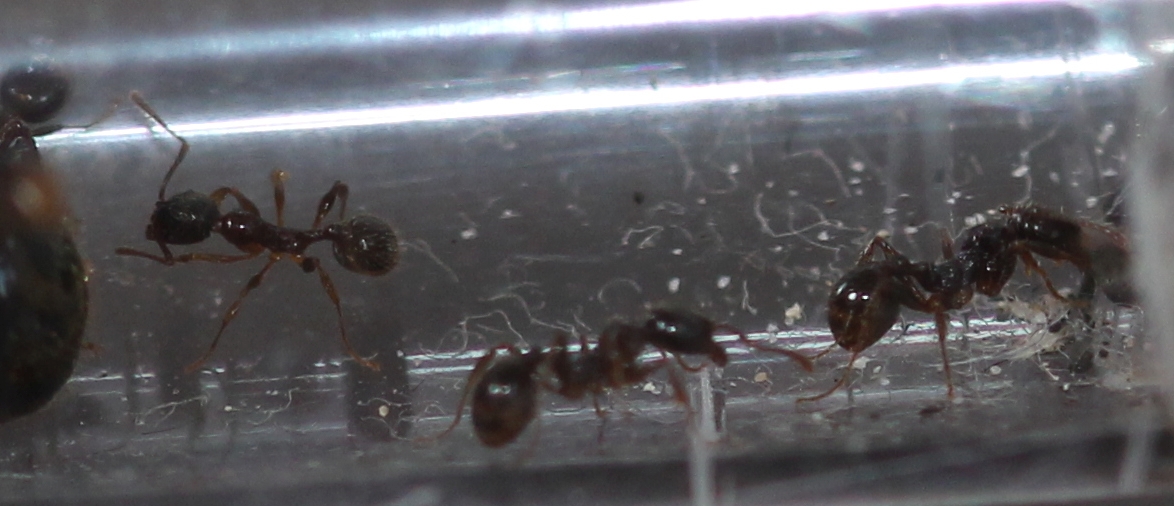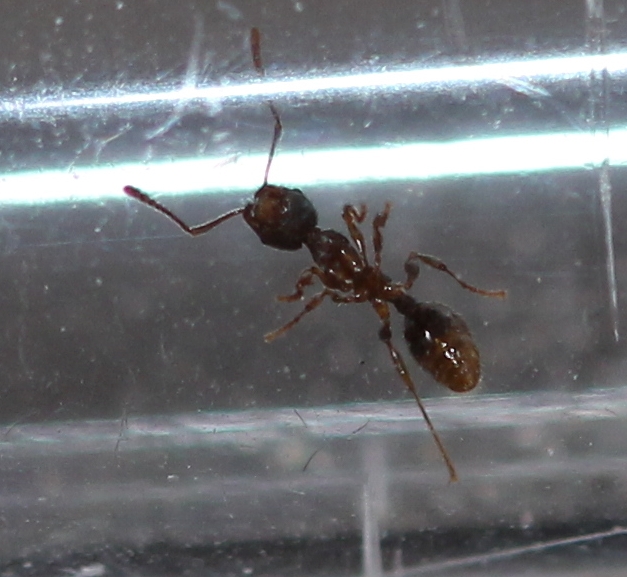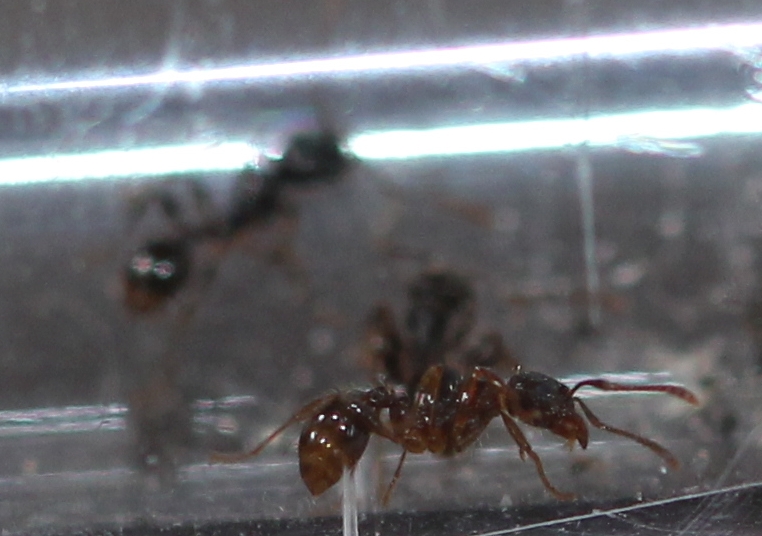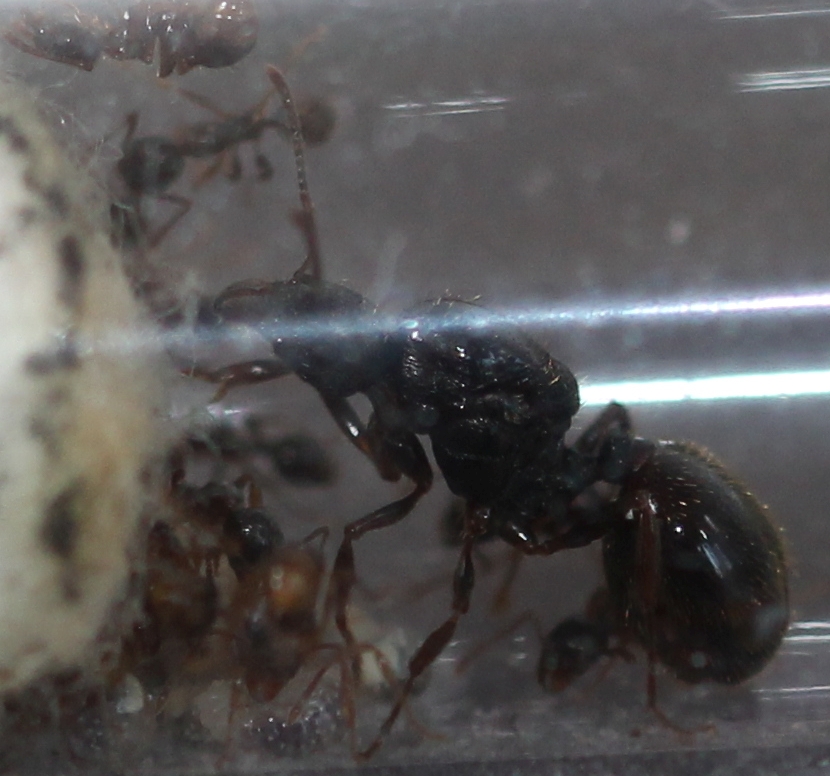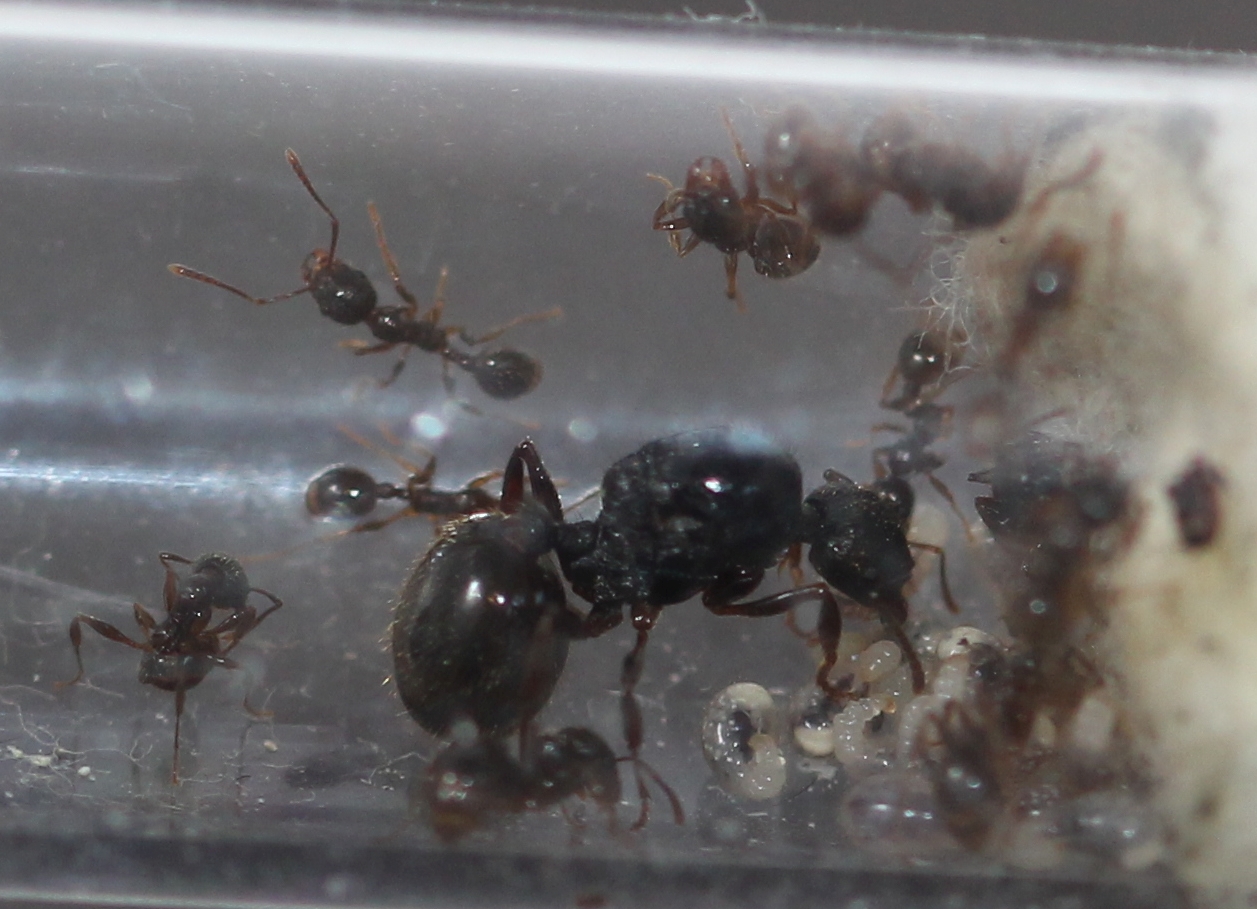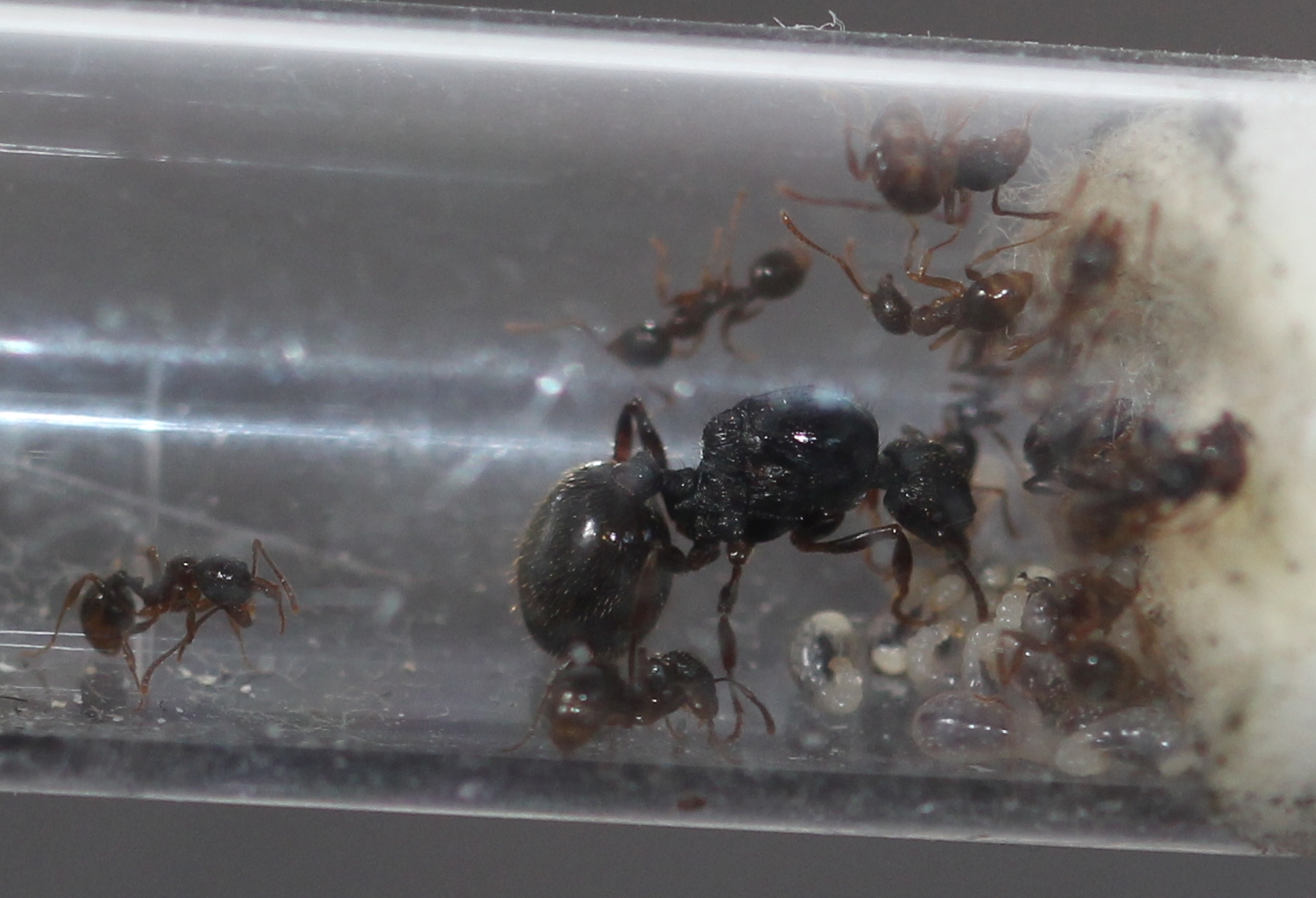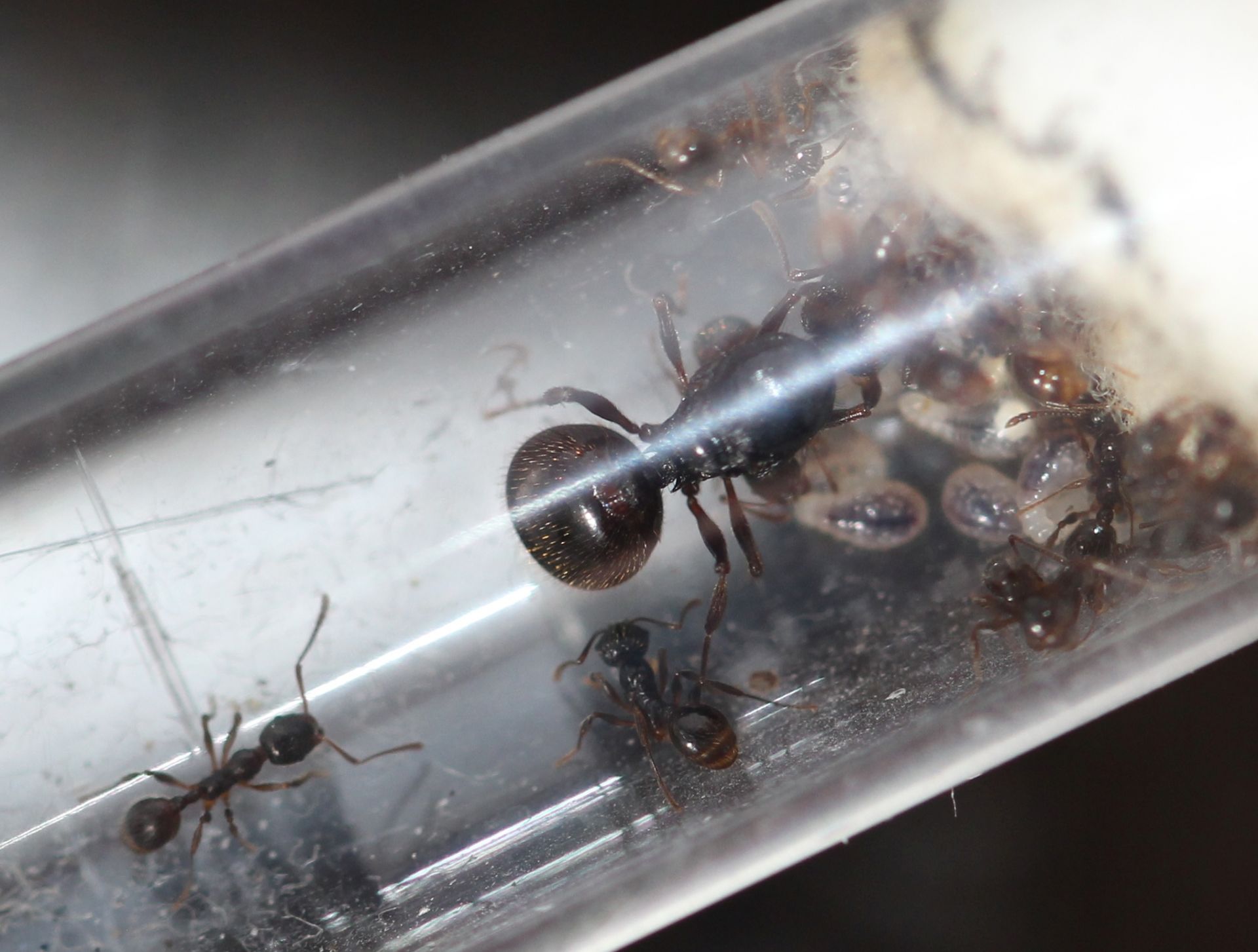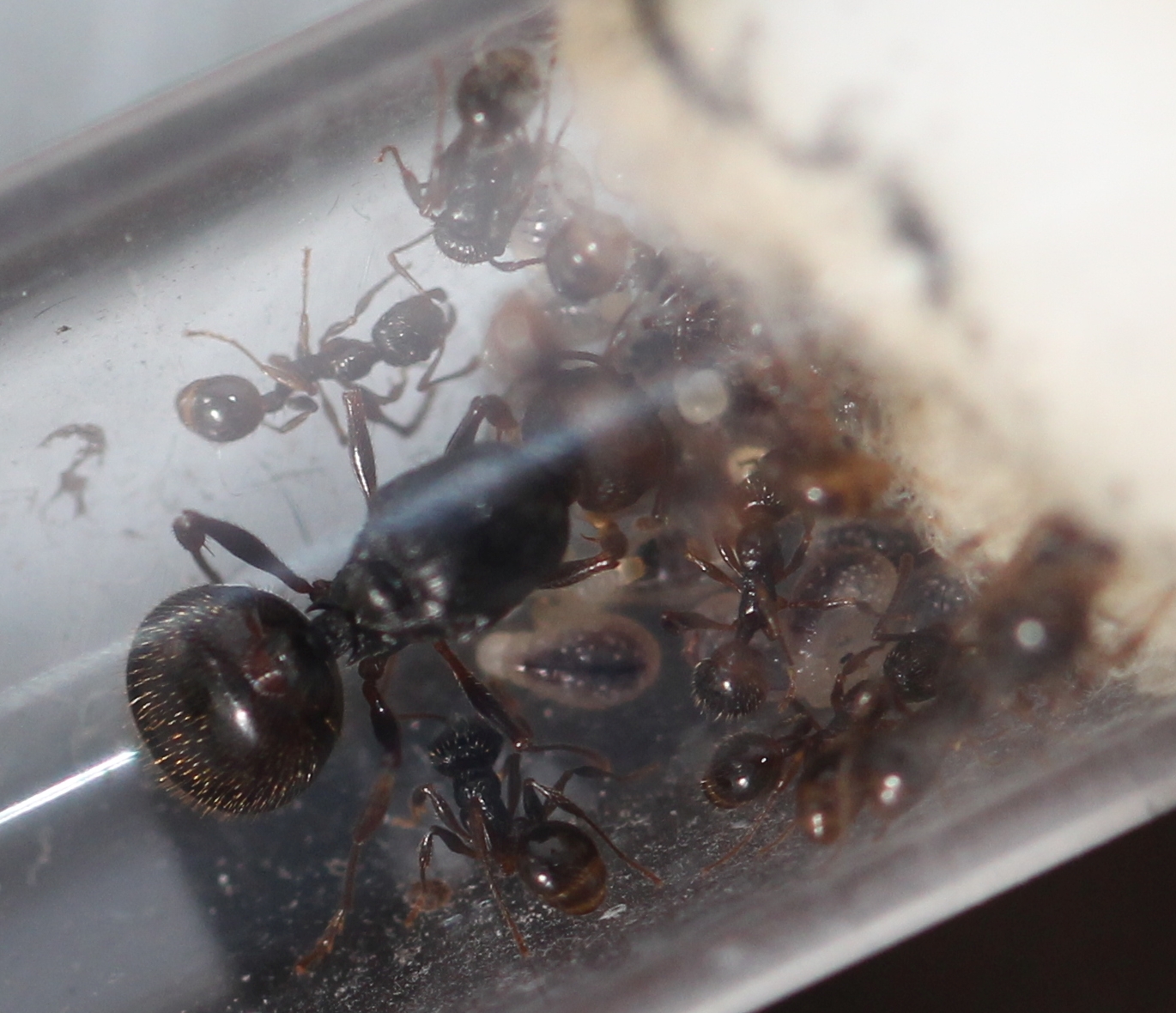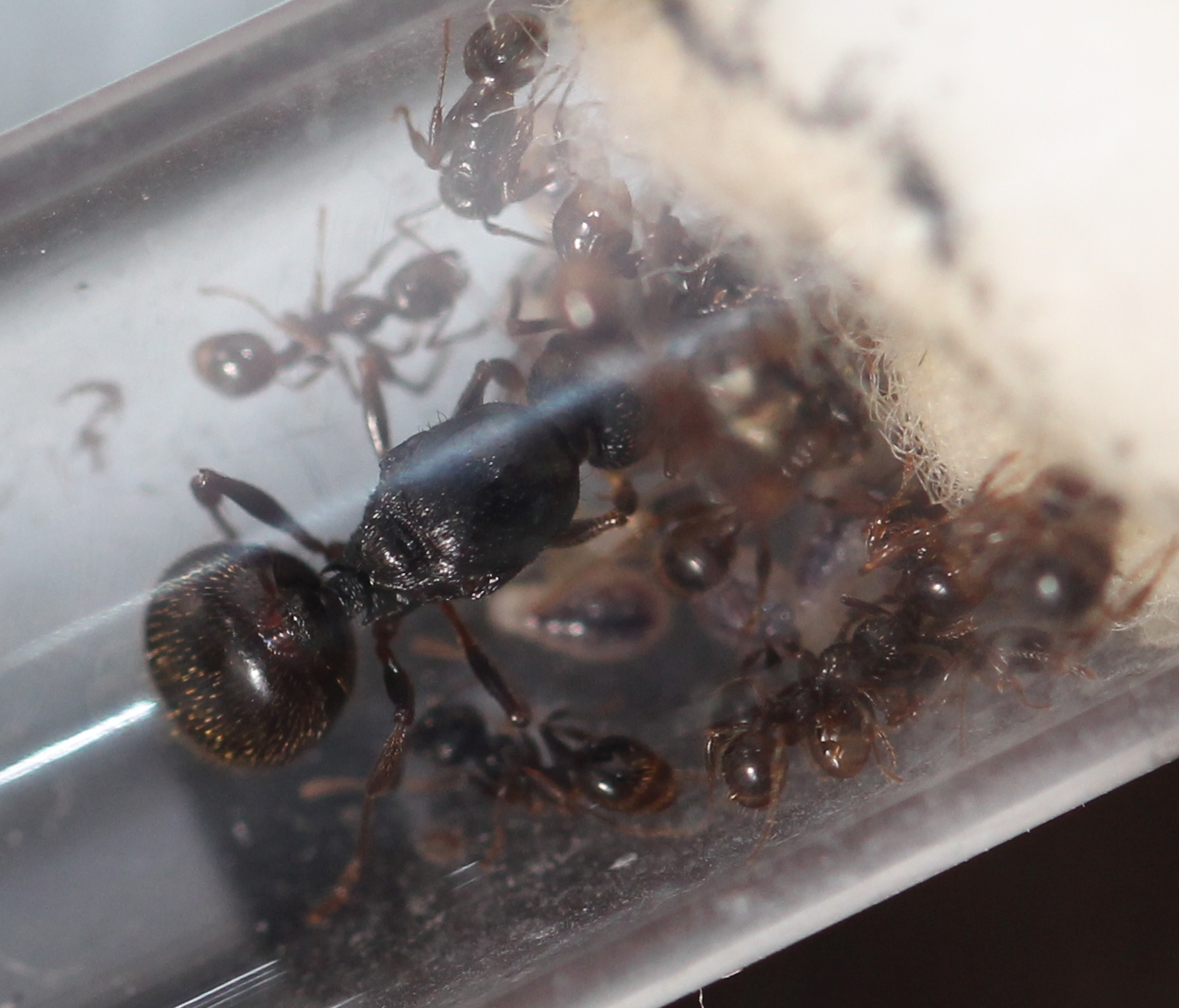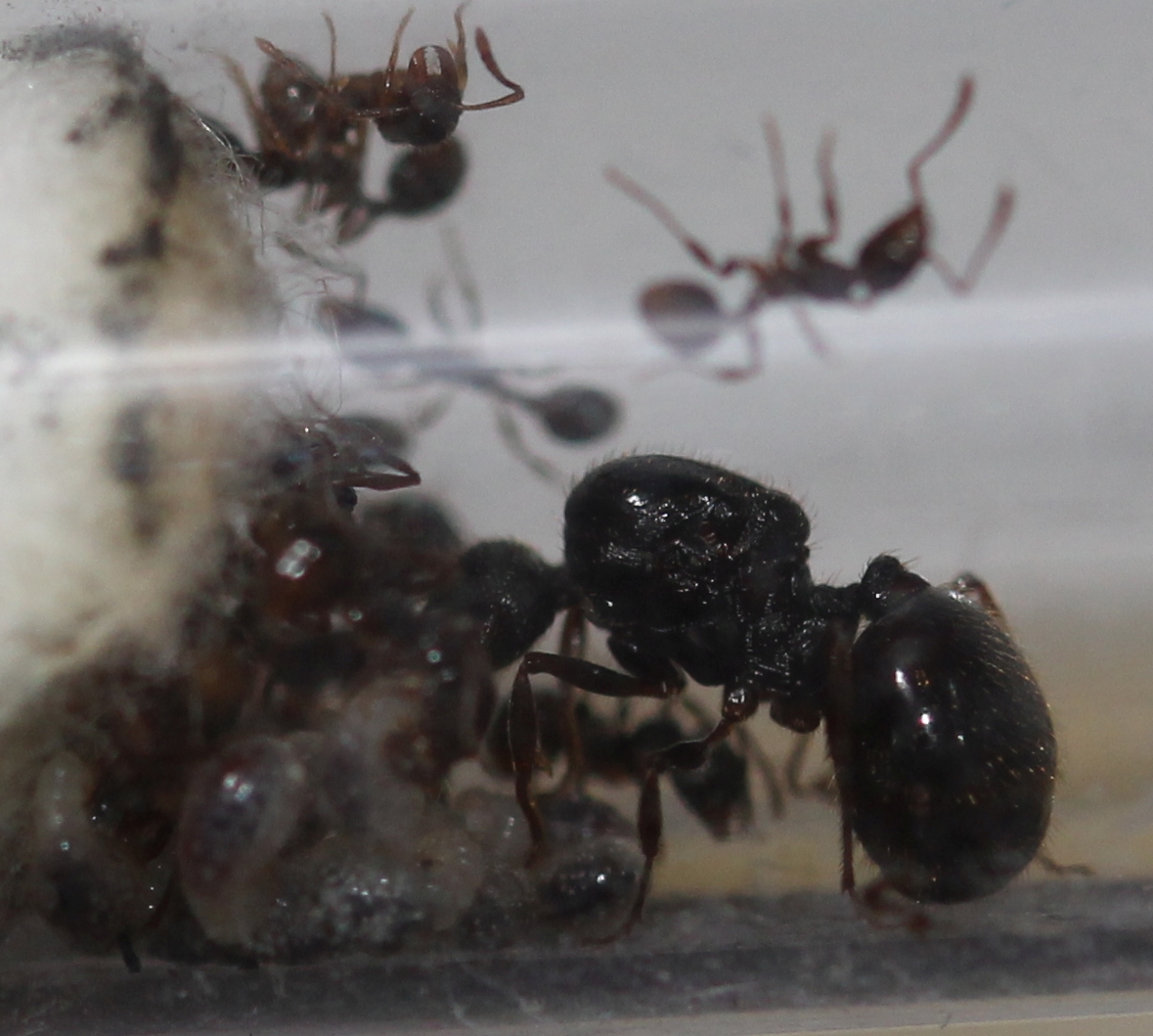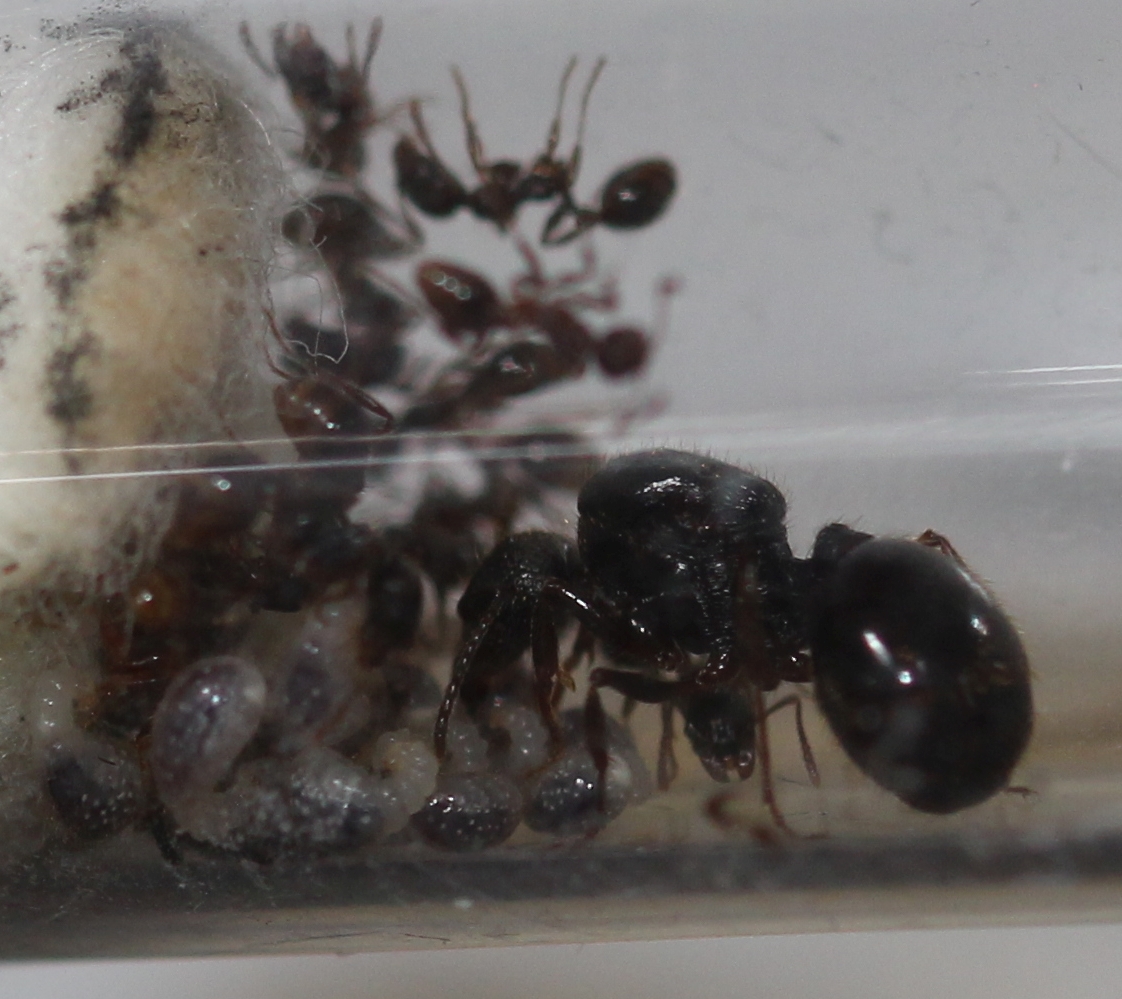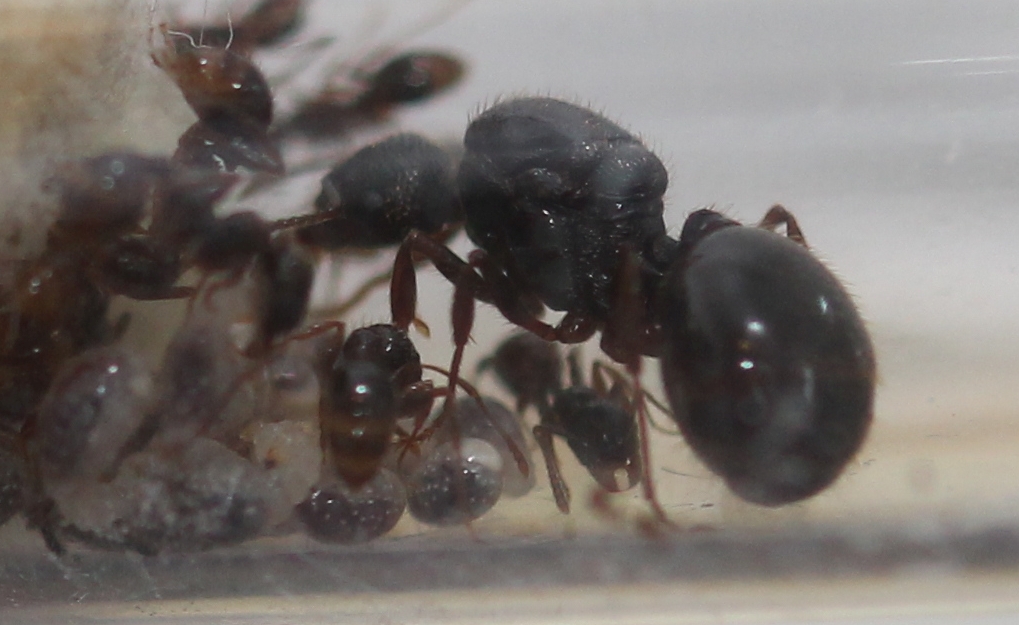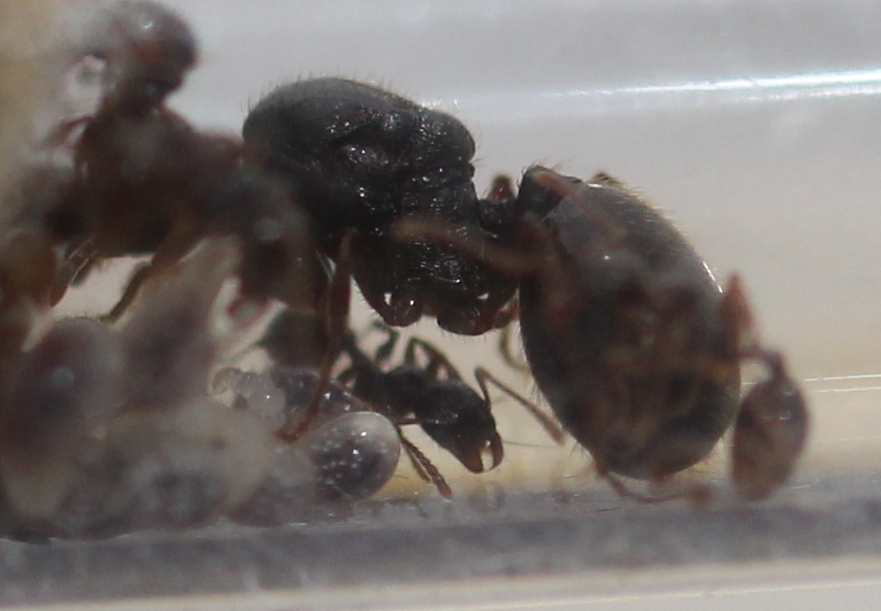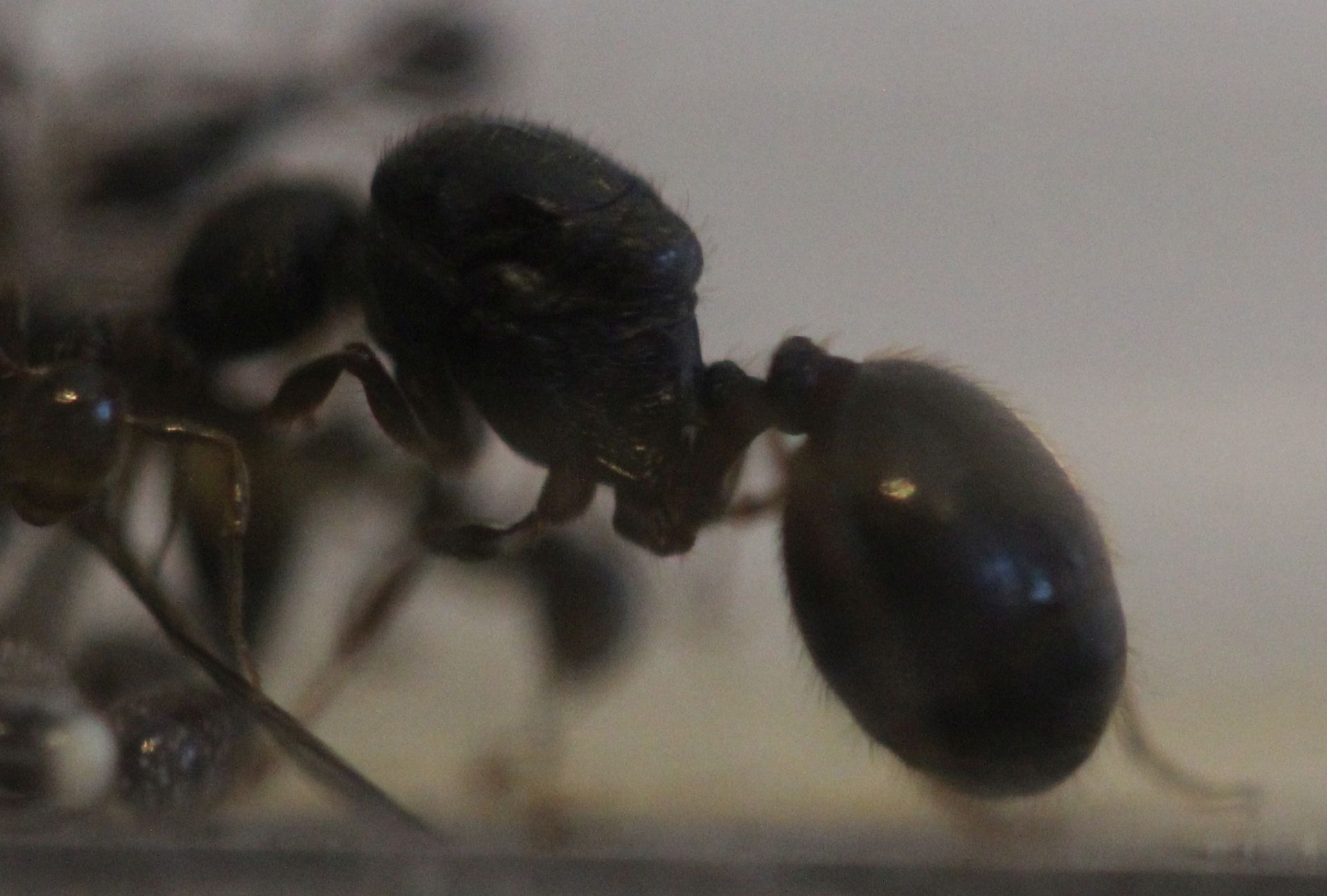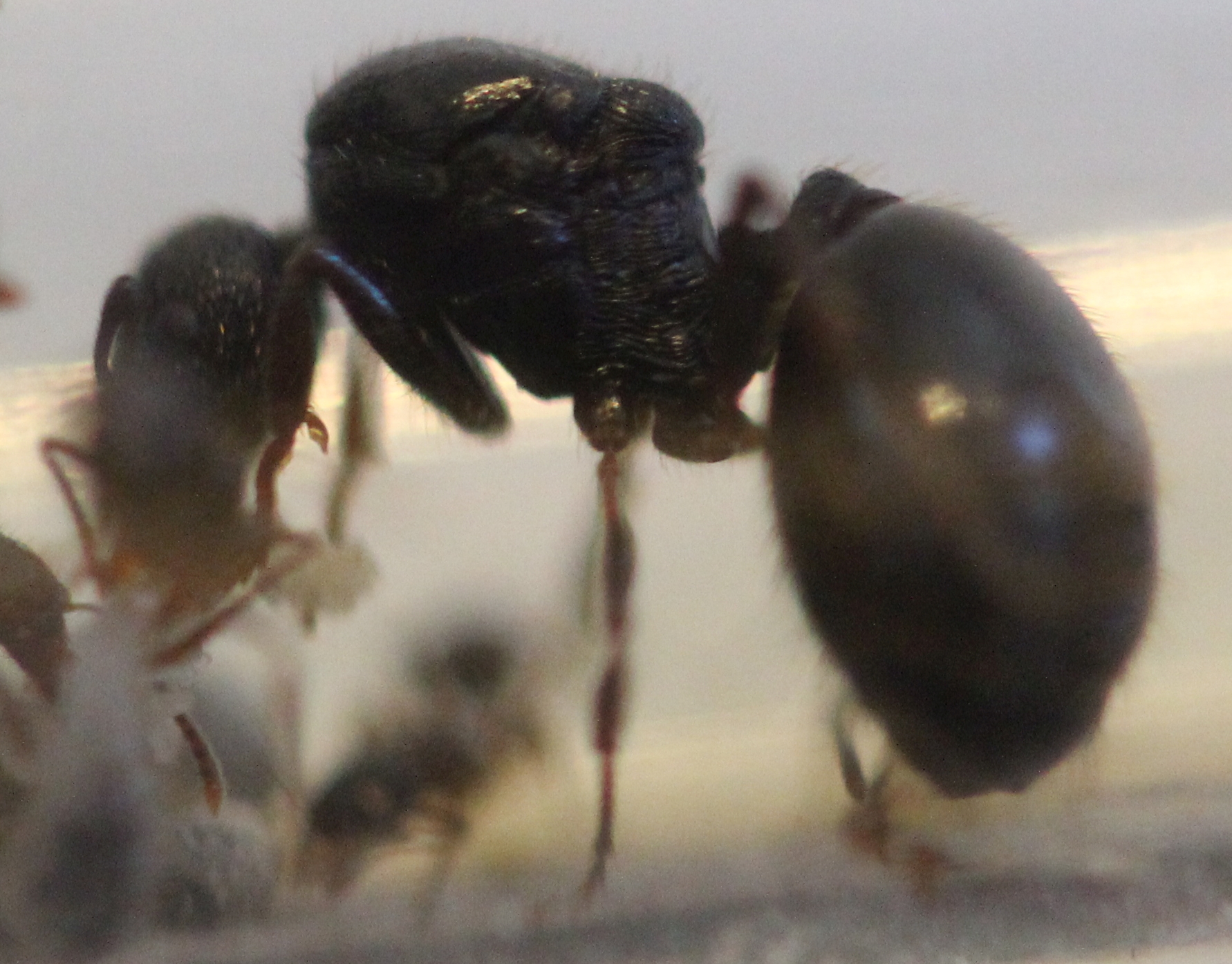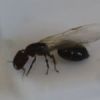1. Location (on a map) of collection: Split, Croatia, South Europe (coastal)
2. Date of collection: September 2018.
3. Habitat of collection: mediterranean town, pine forests, directly on coast
4. Length (from head to gaster): queen: approximately 9mm , nanitics: 3-4mm
5. Color, hue, pattern and texture: very dark maroon (redish-brown), almost black, shiny
6. Distinguishing characteristics: late flight (late September), had eggs before hibernation
7. Distinguishing behavior: shy, apply insect food directly on larvae, cover liquids in substrate
8. Nest description:
9. Nuptial flight time and date: late September 2018.
Hello friends,
please help me identify this little colony.
I collected the queen during a large Messor wasmanni flight, believing she was a curiously small M. wasmanni queen.
The first significant difference I noticed were the eggs present before the winter (Messor queens had none).
After winter, when nanitics came, they collected seed - I later figured out they were plugging the entrance to the test tube.
There are around 10 nanitics, all of the same size. They are not crazy about sweets, but love insects.
They carry insects into the nest and apply larvae directly onto them. Queen likes to munch on them a lot too. Guess that is a rule in all species.
They rarely leave the nest, and only one at the time. As they moved large objects into the tube and out (pinoli, large flies) I am guessing they leave the nest in larger number at night.
The larvae is rather large and mobile, have elongated necks that move and attach to insects.
I am suspecting Aphaenogaster sp. (presence of propodeal spines)
Here are some photos, I tried to get clear focus on teeth, antennae etc.. with limited success ![]()
